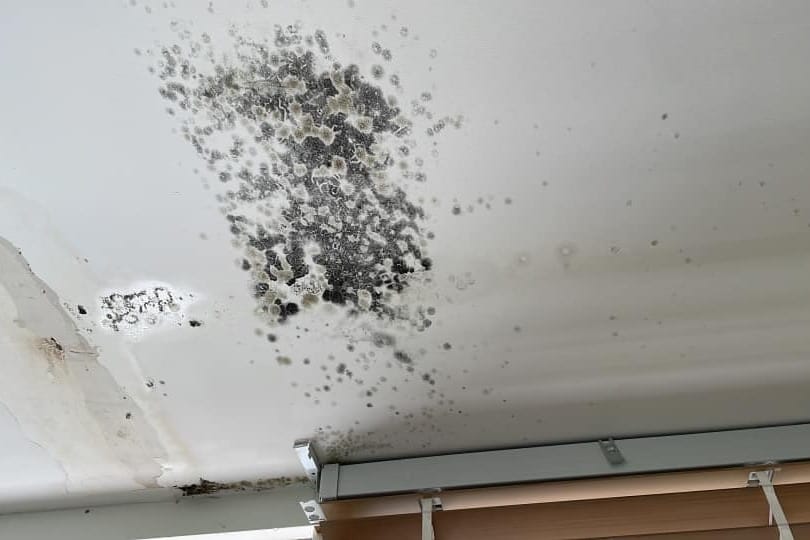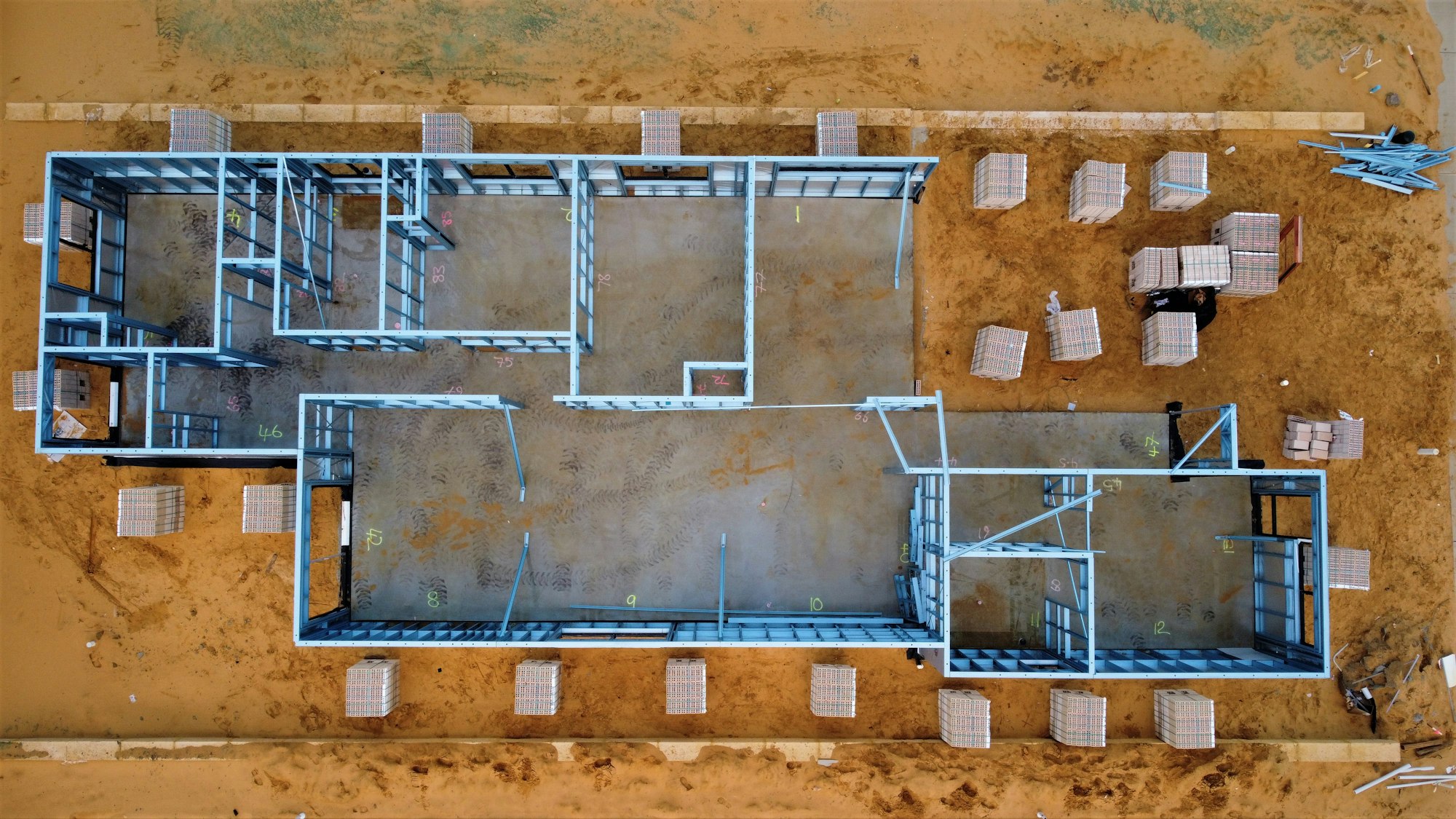You've come to the right place to learn all about residential construction and quality management. Before we forget, if someone forward you this newsletter, don't forget to subscribe to our newsletter to gain access to our resources and the occasional email update.
🤗 Howdy Readers
In this newsletter, you'll find:
A strawman argument is when someone misrepresents or oversimplifies an issue so they can attack that version of it—rather than tackling the real, harder problem.
This is how you cut red tape!

🤔 Red Tape Got Blamed, But is this just a Strawman Argument?
Ah, the old “red tape” villain. So the government, in all its efficiencies, has decided its going to focus on a generic battle cry of cutting "red tape" because that's the best solution we have to fixing housing supply side issues and affordability?
Calling it an oxymoron is understatement—governments are basically built on red tape! So… if we cut it all, does that mean we’re cutting the government itself?
Honestly, I’d rather watch Power Rangers try to build houses than sit through another ‘we’re cutting red tape’ PR campaign!
Gimme a break. Sounds like someone has just developed a case of DARVO.
What is DARVO?
- Deny – flat-out refusing or minimising the wrongdoing.
- Attack – targeting the accuser to shift blame or discredit them.
- Reverse Victim and Offender – flipping the script, portraying the abuser as the wronged party and the true victim as the
DARVO +The “Red Tape” Argument
1. Deny
When housing crises details unfold, policymakers often flat-out deny structural policy failures. Instead, they just label “red tape” as the main issue—even though the real issues are supply (policy+infrastructure+MMC+Investment in R&D/Manufacturing) and demand (high immigration) constraints. This denial deflects attention from their own inaction or policy missteps.
2. Attack
Rather than owning responsibility, the narrative shifts to attacking anyone they point the finger towards—Local Governments, industry experts, housing advocates/groups, or regulatory bodies—accusing them of defending inefficiency, resisting innovation, or obstructing building. This undermines credibility and shifts the conversation away from meaningful policy debate.
3. Reverse Victim and Offender
Finally, the government will cast itself as the one under attack: “We’re just trying to help, yet we’re being blocked by bureaucrats and busybodies.” The very defenders of safety, quality, and equity are painted as villains—while the government portrays itself as the innocent reformer, just trying to help you, the taxpayer. Won't someone think of the children?
It’s the perfect Mass Distraction Event (MDE-we'll claim coining this phrase 24-08-2025), implying that regulation, or the State & Local Government Authority is the enemy (certainly not the Federal Government - don't be absurd)—and if only we trimmed it (who defines "it"?), homes would suddenly be cheaper.
But strip away the bullshit, and it’s glaringly obvious that real reform—like immigration policy or supply side policy changes—has been pushed firmly into neutral for years. Sarcastic much? Oh yes.
So now sit back and watch the sock puppet, with lobby groups whispering "that's or they're the problem" while the government chases after boogeymen draped in their "we're cutting red tape" cape of humility.”

👉️ In August 2025, Housing Minister Clare O’Neil confirmed that updates to the NCC (National Construction Code) would be paused until mid‑2029, with the exception of safety-related tweaks; environmental improvements won’t get a look-in either.
So while everyone dances around the red tape narrative, genuine housing quality improvements—like energy efficiency, resilience, condensation/building envelope fixes—you know making houses healthier and more liveable - are collecting dust.
Some industry groups aren’t impressed. Engineers Australia warns that freezing updates will sabotage housing quality, productivity, and innovation—and argues Australia doesn’t have to choose between speed and quality. Meanwhile, ACIF (Austrlian Construction Industry Forum) is pushing back too, urging policymakers to stick with the NCC’s three-year update cycle—because regular revisions are vital for embracing new tech and modern construction methods
In short, lawmakers are telling us: ‘We’re so good, we don’t need to improve.’ But that just means Australia gets to fall behind when it comes to safety, sustainability, and building resilience, you know houses that are fit for purpose and don't cause harm to occupants (we're referring to the effects of mould here).
👉️ There is always room for improvement, and even small improvements (continuous improvement) can bring about positive change. Still, sticking one's head in the sand is convenient if that's how you define "removing constraints".
Meanwhile, Prime Minister Albanese and Treasurer Chalmers are keen on optics—promising to liberate builders from form-filling and roll out reforms to accelerate housing delivery. Think AI-assisted code navigation, streamlined environmental approvals, modular construction pilots, and even superannuation investment in housing.
Will "AI" be held accountable or will we end up with just a checkbox at form end "by signing this agreement you acknowledge that...- YOUR RESPONSIBLE FOR THE SUBMISSION"
And in the end, we’ll probably figure out the people-and-process approach wasn’t so bad after all. 🤡🎪
👉️ But look closer, and you'll see the punchline is that all of it sounds like progress, but key protections and quality drivers have been set aside. The story becomes: “Let’s blame red tape while we delay code reform.” Convenient for everyone who’d rather not take responsibility.
As the spotlight focuses on uprooting “red tape,” we’re meant to ignore that the very system that ensures safety, sustainability, and innovation is being held hostage. The government isn’t stripping out pointless bureaucracy—they’re sidelining real improvement for the sake of optics and politics.
But the bigger issue? Is demand exploding beyond supply capacity. Letting immigration soar while failing to build enough homes is not careless—it’s effectively a policy decision.
Whether it's ignorance or opportunism, the result is the same: Australians lose.

“Gimme Fuel to the Fire”: Why Do We Keep Adding Demand Without Fixing Supply?
While the government busily positions “red tape” as the villain in the housing affordability and supply side issue, what's really scorching the market is unchecked immigration. Demand keeps climbing, but supply? Almost idle on the tracks.
Immigration because of government policy has surged. Net overseas migration reached around 446,000 in 2023–24, following a peak of 536,000 in 2022–23 .
That’s nearly half a million extra people needing homes—with housing completions nowhere near matching. Australia built roughly 180,000 homes last year, while to meet demand we’d need about 240,000 annually. The result? A shortfall that seriously inflames rent and price pressures.
We're not making this up either! The National Housing Supply & Affordability Council (NHSAC) forecasts a shortfall of 262,000 dwellings by mid‑2029—adding 79,000 homes worth of deficit in just the next five years.
If population growth were just 15 percent lower, we’d flip from a shortfall to a surplus of about 40,000 home. This is fixable but is being deliberately ignored!
So—why do we keep cranking immigration beyond our housing industry’s capacity? Supply can’t keep up with demand, yet arrivals don’t slow. Is this wilful ignorance? Or a deliberate choice to boost tax revenues, live with the chaos, and punt solutions down the road for someone else to fix?
Some economists, like Dr. Shane Oliver, put it plainly: immigration levels must align with how many homes we can actually build. If our capacity hovers around 200,000 dwellings a year, then migration should drop to around 200–260,000 people annually (Source).
In simpler terms: we’re inviting more people than we have homes—and calling it good policy. That’s not just stupid; it's complacency. In our opinion it’s not about housing policy failure—it’s about political convenience and revenue calculations. Meanwhile, renters, first-time buyers, and working families bear the brunt.
🎯 If a private company made decisions like this, it would be on trial for gross negligence. But when government does it, the line is: “You don’t understand the full picture. There are reasons—we just can’t tell you.
So never mind—we’ll doublespeak and gaslight right through to the next election, still blaming anyone but ourselves.
Further Reading







💾 Software of the Week: 📸 Sitepics.app
(This isn’t a sponsored post—we've recently set this up for a family member to use and thought we’d share it with you.)
Meet Sitepics.app—a neat, lightweight tool that turns the chaos of site photos into order. Built by an Australia-based team, it's perfect for anyone frustrated by wading through camera rolls, confusing folders, or endless WhatsApp photo threads.
What It Does
Snap a photo onsite with your phone, and Sitepics automatically tags it with time and location—no typing required. All your team’s pics roll into a central feed that you can filter by site, map, or person.
Why We Like It
- Very affordable: Generous free starter plan and user-friendly pricing as your team grows.
- Simple & lightweight: Built for real-world use—not tech jargon. Easy to get started in minutes.
- AU-based support: Friendly and local — no offshore tech runaround
What It Solves
Ever struggled to find that one shot of a safety issue or photo needed for billing? Sitepics turns scattered snapshots into annotated, searchable, timestamped, geo-tagged visual records—making reporting and audits a breeze.
Who It’s For
If you manage or work on-site—whether that’s construction, inspections, property, utilities, or facilities—this tool is built for you. No fuss, just fast visual documentation.
System Requirements
- Works on both web browsers and mobile apps (iOS & Android).
- Just needs a modern device and internet—no fancy software or technical setup required.
In Summary
Sitepics.app turns everyday on-site photos into powerful, organised visual records. It’s affordable, intuitive, reliable—and we love that it's Australian-made. Expect less admin time and more peace of mind.
👉 Learn more about SitePics.app by clicking the link below:

🎧️ Music of the week
"Amanda Lear - Red Tape" - 1981
Can't see the video embed below? Click here. to watch on Youtube.
📬️ Post 1 - Your Data Is Listening—And Watching (Post 1 of 6)
Think Cambridge Analytica was just one scandal among many? Think again. In this first post of a six-part series, we take you back to where it all began—the moment when personal data became a tool for influence.
You’ll learn how your online habits—every click, like, and login—can add up into a psychological profile, shaping what you believe, how you vote, and the news that fills your feed. We give you an overview not just how these data tactics work, but also why they still matter—and what you can do to push back.
This isn’t about construction (don’t worry, there’s more of that coming). It’s about something bigger: how modern tech, AI, and algorithms are quietly redefining our digital lives—and what that means for all of us.
👉 Give it a click, have a read:

📬️ Post 2 - What is the difference between a DPC and a Cavity Flashing?
Wondering about that mysterious thin, black line in your home's wall? That’s often a Damp Proof Course (DPC)—a simple but essential barrier that stops ground moisture from creeping into your walls and causing mould or damage.
But if you’ve ever wondered what a cavity flashing does, wonder no more. While the DPC keeps things dry from below, cavity flashing is all about redirecting moisture that sneaks into the wall cavity—especially around windows, sills, or at wall bases—so it drains out safely through weepholes. Im sure you'll sleep soundly now you know this!
In this article we break down:
- What a DPC actually is and why it matters.
- How cavity flashing works alongside the DPC to protect your home from damp-related issues.
- Clear insights straight with visuals and references to Australian standards.
👉 Read the full article by clicking the link below:

📬️ Post 3 - Cambridge Analytica Rebranded: Meet the Spin-Offs Still Profiling You (Post 2 of 6)
Think the Cambridge Analytica ended in 2018? Think again. In this post, we pull back the curtain on our reality: the controversial data-matching techniques that once shook democracies didn’t disappear—they morphed into new outfits with new names.
Meet Emerdata, the quiet corporate shell where ex-Cambridge Analytica execs regrouped. Then there’s Auspex International—the “clean” consultancy that sounds innocuous but mirrors CA’s old psychological profiling methods. And don’t sleep on Data Propria, the U.S.-based rebirth quietly running micro-targeted political campaigns.
What’s truly unsettling is how seamlessly the game continues: same tactics, same people, and the same goal—nudging your thoughts and impulses—for political ends.
Cambridge Analytica may have gone offline, but its DNA is still pulsing through today’s data strategies.
👉 Read the full article by clicking the link below:

In Case You Missed It
Hot off the press: the Summer 2025 AI Safety Index was just published by the Future of Life Institute. This report takes a hard look at how seven leading AI labs—including Anthropic, OpenAI, and Google DeepMind—are doing when it comes to managing risk, building safety frameworks, and planning for worst-case scenarios.
Here’s a quick overview:
- Anthropic leads, with a C+ overall—earning top marks on risk assessments, privacy, and alignment research.
- OpenAI followed behind with a solid C, while Google DeepMind landed a modest C‑.
- Most alarming: no company scored above a D on “existential safety”—a measure of how prepared they are for advanced, potentially uncontrollable AI.
As FLI co-founder Max Tegmark says, it’s like building a nuclear power plant with no safety protocols.
🤔 Tech Spotlight: Who Was Dick Pick?
Something random—but this week I stumbled on something cool and just had to share. Have you ever heard of the Pick Operating System? It’s not about picking something silly—it’s named after Richard A. ‘Dick’ Pick, a real computer trailblazer from the 1960s.
Back when he was at TRW working on a U.S. Army project, Pick teamed up with Don Nelson to build this amazing database system that spoke a kind-of English-like language. They first called it GIRLS (yep, an acronym), then re-branded it as GIM (General Information Management), and the Army eventually named it ITDS (Integrated Technical Data System).
What made it stand out? It bundled a database, a query language, and procedural tools—all in one neat package. That meant even folks who weren’t hardcore coders could do powerful stuff. And this was no tiny system—it ran on everything from mini‑computers to PCs and mainframes.
Dick Pick didn’t stop there. In 1972, he founded Pick & Associates (later known by several names) and licensed the system to multiple vendors. That’s why versions of Pick—notably under names like "Reality," "UniVerse," "D3," and more—are still quietly powering business systems today.
Sadly, Dick Pick passed away in 1994 at 56, but his legacy lives on. In tech circles, Pick is often called the best-kept secret—"a resilient, underappreciated powerhouse that helped shape modern data systems".

I bet you thought i was Rick Rolling you with the name? Its 100% legit.
✅ Our Quality Checklists

C14 Tile Design & Installation Checklist recently added to the list 09-08-2025
Please note: You’ll need to be a member and to log in to access the content.
📜 Reader Survey: Should all builders display a quality rating score?
Tell us what you think. Can't see the embed below? Click here to open it (opens builder quality score rating survey)



















